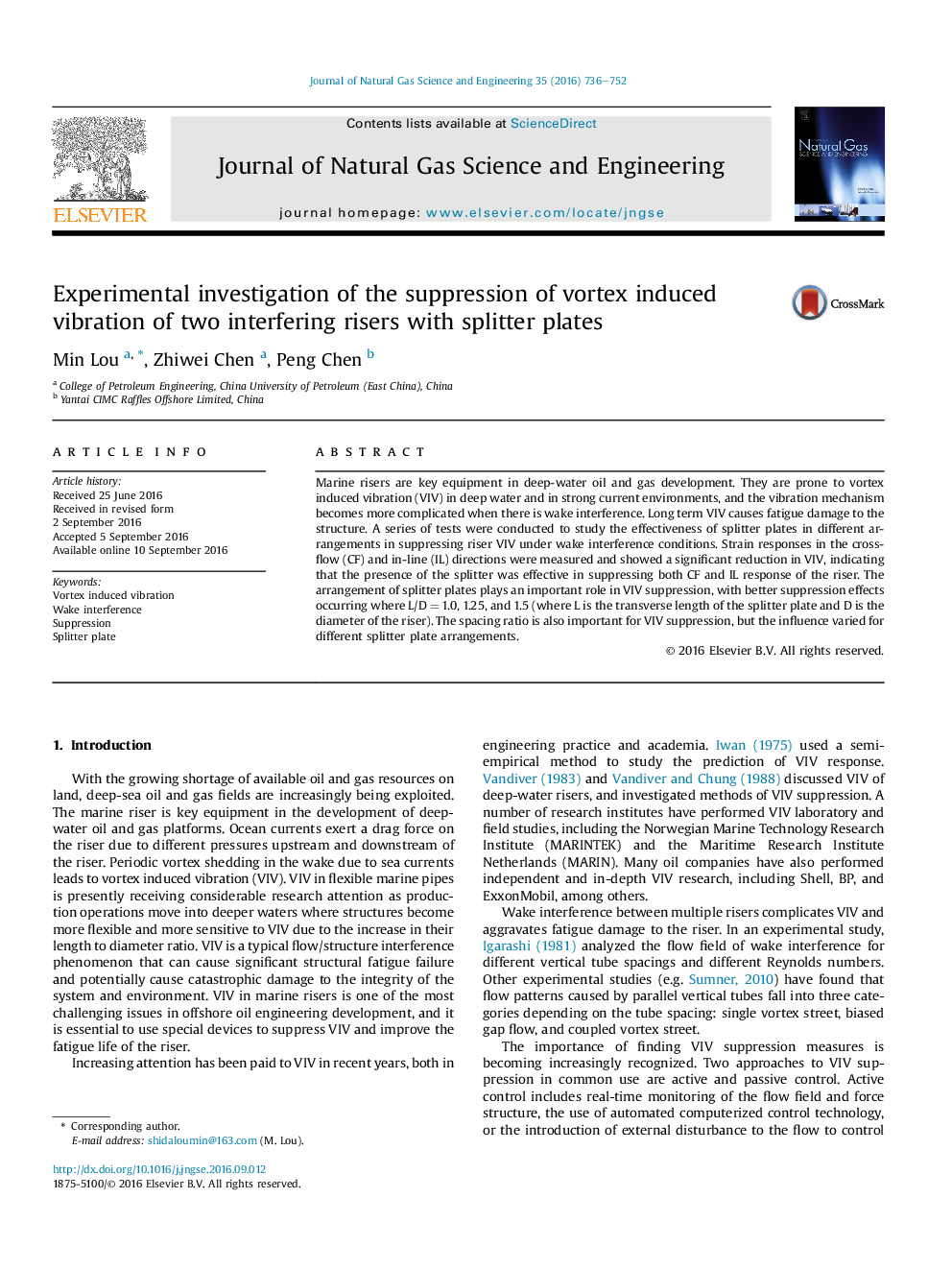| Article ID | Journal | Published Year | Pages | File Type |
|---|---|---|---|---|
| 6481583 | Journal of Natural Gas Science and Engineering | 2016 | 17 Pages |
â¢The riser experiments were carried out for different flow speeds (0.25 m/s, 0.3 m/s, 0.35 m/s, 0.4 m/s).â¢For two parallel risers with splitter plates, the VIV was mitigated in both the CF and IL directions.â¢Of all the splitter plate arrangements, L/D = 1, 1.25 and 1.5 suppressed VIV most effectively.
Marine risers are key equipment in deep-water oil and gas development. They are prone to vortex induced vibration (VIV) in deep water and in strong current environments, and the vibration mechanism becomes more complicated when there is wake interference. Long term VIV causes fatigue damage to the structure. A series of tests were conducted to study the effectiveness of splitter plates in different arrangements in suppressing riser VIV under wake interference conditions. Strain responses in the cross-flow (CF) and in-line (IL) directions were measured and showed a significant reduction in VIV, indicating that the presence of the splitter was effective in suppressing both CF and IL response of the riser. The arrangement of splitter plates plays an important role in VIV suppression, with better suppression effects occurring where L/DÂ =Â 1.0, 1.25, and 1.5 (where L is the transverse length of the splitter plate and D is the diameter of the riser). The spacing ratio is also important for VIV suppression, but the influence varied for different splitter plate arrangements.
